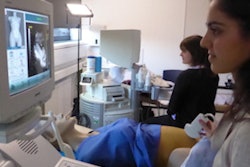
A report produced by Imperial College London researchers and Philips Healthcare is sounding the alarm regarding the urgent need to expand diagnostic imaging capability across England.
The report finds that new community diagnostic centers need to be established in areas where residents face socioeconomic challenges and long wait times to effectively tackle imaging backlog in the U.K.'s National Health Service (NHS) system. The problem has been caused in part by the COVID-19 pandemic.
The U.K. government plans to create 160 of these centers by 2025, according to the report. The number of individuals waiting for diagnostic imaging tests is currently 1.4 million, and the proportion of those waiting more than six weeks for an MRI exam has risen from 2.2% in 2019 to 22.8% in 2021 and for a CT exam from 2.3% in 2019 to 19.4% in 2021. The proportion of those waiting for echocardiography has risen from 4.3% in 2019 to 41.9% in 2021 and for gastrointestinal endoscopy from 9% to 35.7%.
The report also finds that the proportion of patients seen and treated for cancer within two months has decreased, from 77.5% in 2019 to less than 68% in 2021.
"The pandemic has muddied an already challenging picture facing the NHS," said study co-author Dr. Jonathan Clarke of Imperial College London in a statement released by the college. "Community diagnostic centers can play an important role in getting the NHS back to prepandemic levels of care and beyond, but their rollout must be consistent with their design. [community diagnostic centers] must be established in communities ... and critically, be staffed by a highly trained workforce and have the appropriate equipment."



















